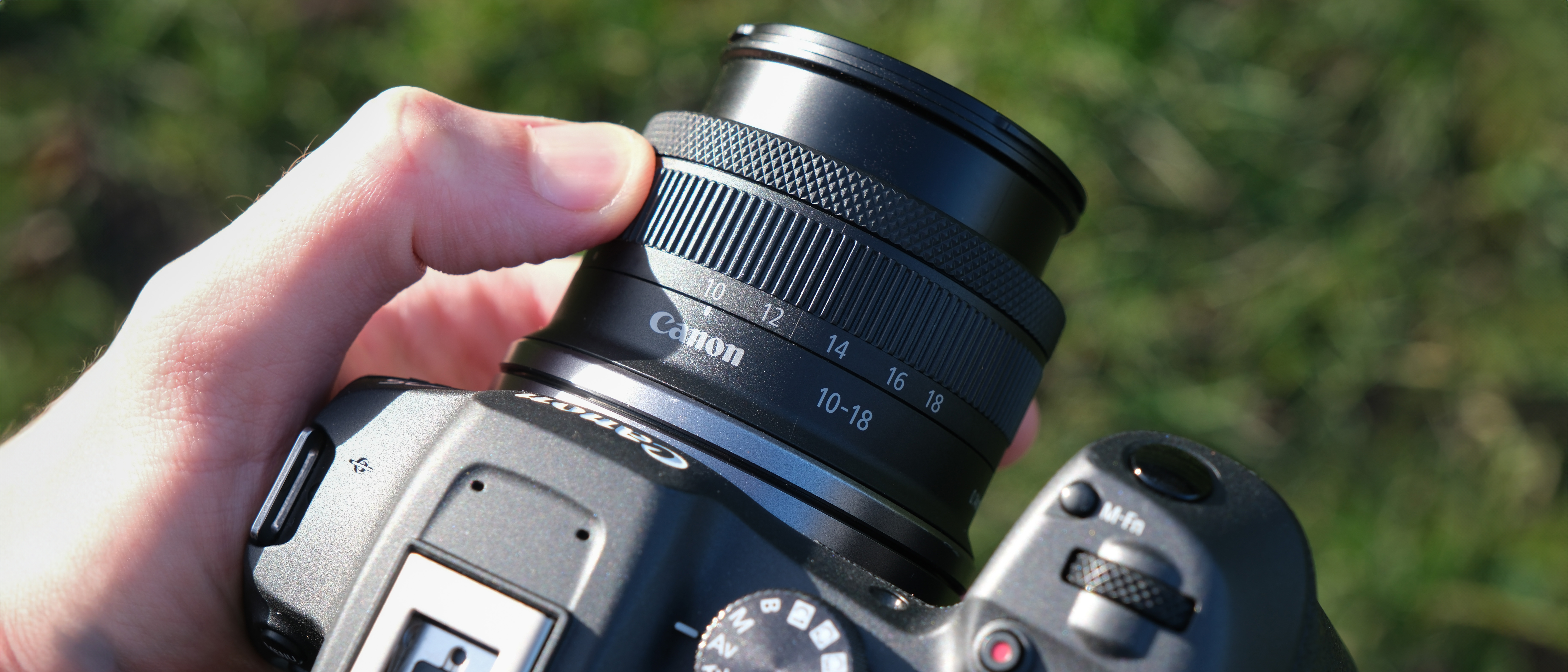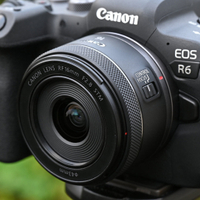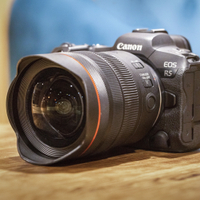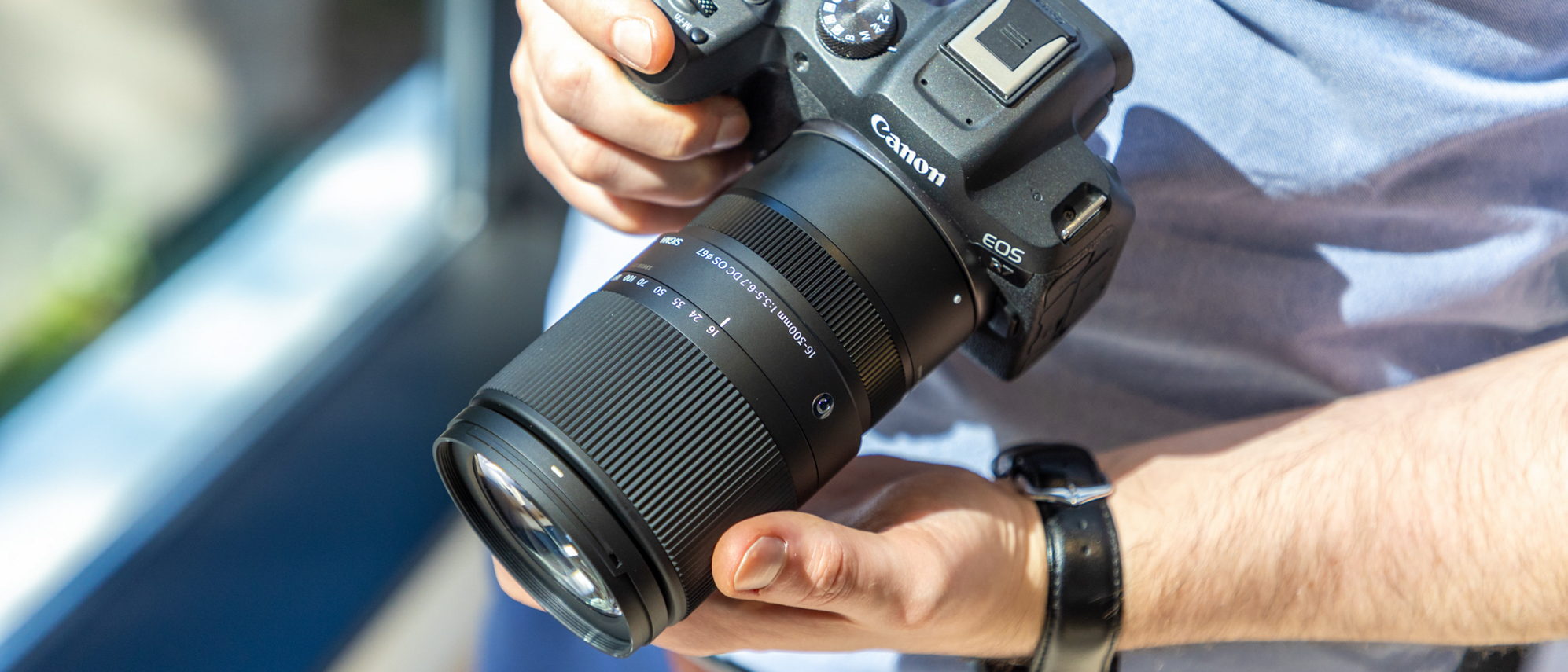Digital Camera World Verdict
The Canon RF-S 10-18mm f/4.5-6.3 IS STM is an excellent wide-angle lens for Canon's smaller EOS R cameras. With a competitive price, it's an appealing option for newcomers to vlogging, videography, or wide-angle photography. The lens is incredibly compact, especially on cameras like the EOS R100. The 10-18mm delivers sharp clear photos, although it does rely a lot on in-camera distortion corrections, but that seems to be the new normal. With its fast and silent STM motor, the RF-S 10-18mm is my new top choice for a Canon vlogging lens.
Pros
- +
Tiny compact size
- +
Solid image quality
- +
Autofocus is quick and silent for video
- +
Works on both RF-S and RF cameras
Cons
- -
Narrow aperture struggled in low light
- -
Significant distortion if uncorrected
Why you can trust Digital Camera World
Since it first came onto the scene, the RF-S mount has struggled a little to find its place. With Canon’s need to fill out its lens lineup for its professional RF mount cameras, lenses specifically made for the RF-S mount have been few and far between – and some have even speculated that it might end up meeting the same fate as the EF-M mount used by EOS-M cameras.
The Canon RF-S 10-18mm f/4.5-6.3 IS STM, however, has come along to fill a much-needed hole in the existing lineup for a compact, wide-angle lens for photography and vlogging that gives RF-S cameras a boost.
Out of the only three Canon RF-S lenses that have been launched before this one, the Canon RF-S 18-45mm f/4.5-6.3 IS STM has been the widest lens available for the RF-S mount used by cameras including the Canon EOS R50 or Canon EOS R7. Although I don't think anyone would consider the 18-45mm lens exactly a true wide angle, with an approximately 29-72mm focal length in full frame equivalence.
Luckily RF-S cameras are also able to take on RF lenses, so the Canon RF 15-30mm f/4.5-6.3 IS STM and Canon RF 16mm f/2.8 STM have offered slightly wider angles – although not by all that much, equivalent to 24-48mm and 26mm respectively.
Thankfully the Canon RF-S 10-18mm has come to answer the prayers of wide-angle Canon shooters, as well as vloggers itching to get a wider lens for arms-length video. With a full frame equivalence of 16-29mm, the RF-S 10-18mm lens does offer the broadest perspective yet, matching the considerably more premium Canon RF 10-20mm f/4L IS STM.
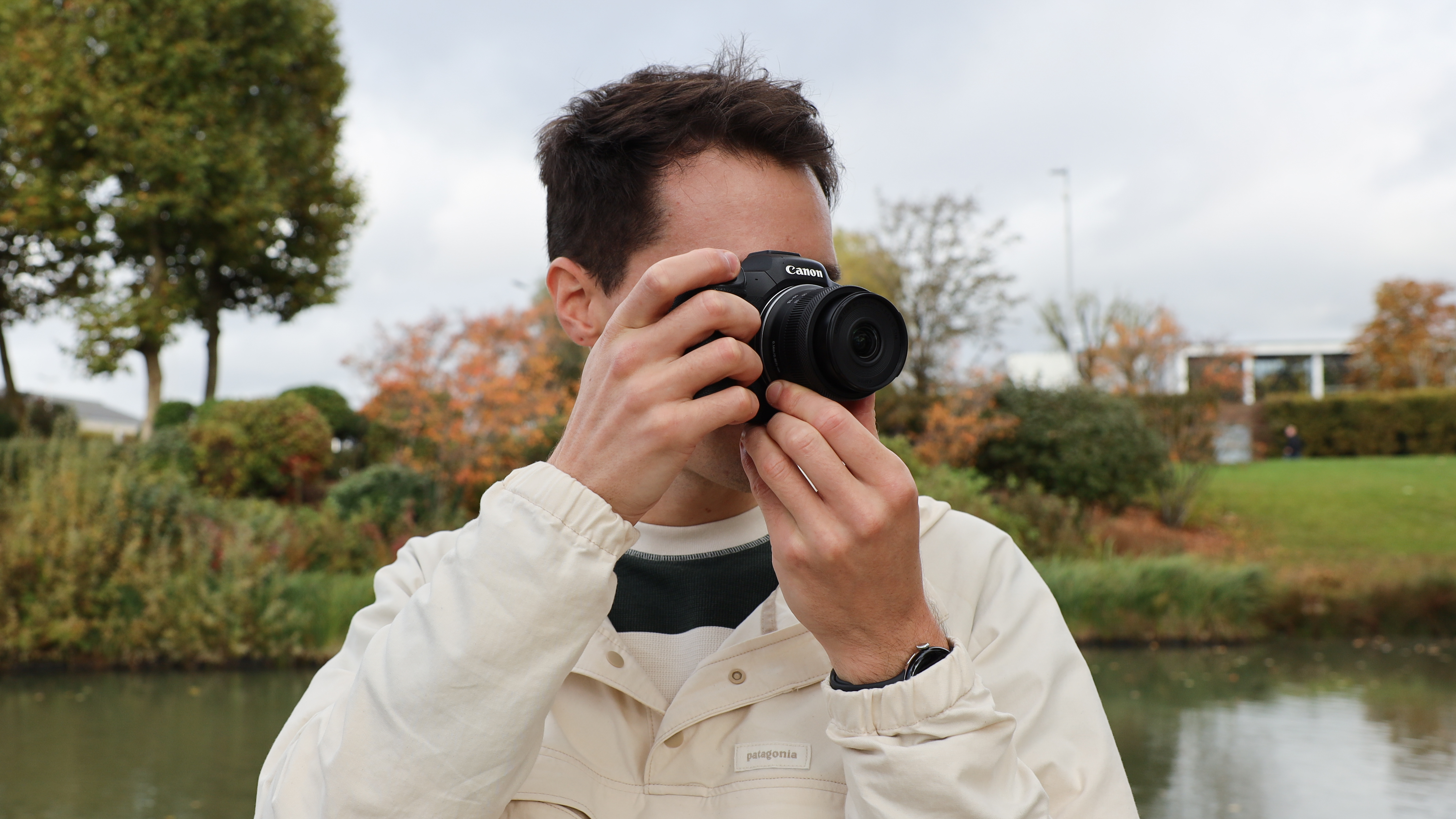
Canon RF-S 10-18mm: Specifications
| Autofocus | STM |
| Lens construction | 12 elements/10 groups |
| Special Optics | 2x UD, 1x PMO |
| Diaphragm blades | 7 |
| Aperture | f/4.5-6.3 (max), f/22-32 (min) |
| Close focusing distance | 0.14m (AF), 0.086m (MF) |
| Maximum magnification | 0.23x (AF), 0.5x (MF - 10mm) |
| Image stabilization | 4 stops (OIS), 6 stops (OIS+IBIS) |
| Filter diameter | 49mm |
| Size (diameter x length) | 69 x 46.3 mm / 2.72 x 1.82 in |
| Weight | 150 g / 5.29 oz |
Canon RF-S 10-18mm: Price
When it comes to price, although this is still a very affordable lens, at $329 / £379 / AU$599, the RF-S 10-18mm does cost slightly more than the 18-45mm’s $299 / £339 / AU$399 price tag – and making the buying decision even trickier is the $299 / £339 / AU$499 Canon RF 16mm, with its much wider aperture.
This makes for a difficult decision of whether you would rather have the wider angle of the 10-18mm, or superior low light performance and background blur of the 16mm.
Canon RF-S 10-18mm: Design & Handling
The Canon RF-S 10-18mm follows Canon’s recent collapsable lens designs, which enable the lens to be remarkably compact when not in use. Although even when I popped the front of the lens out to the first zoom marker, it's still one of the shortest zoom lenses I have used; the entire zoom range only moves the front of the lens in and out a couple of millimeters. This lens is the perfect pocketable-sized companion for a camera like the Canon EOS R50 or Canon EOS R100.
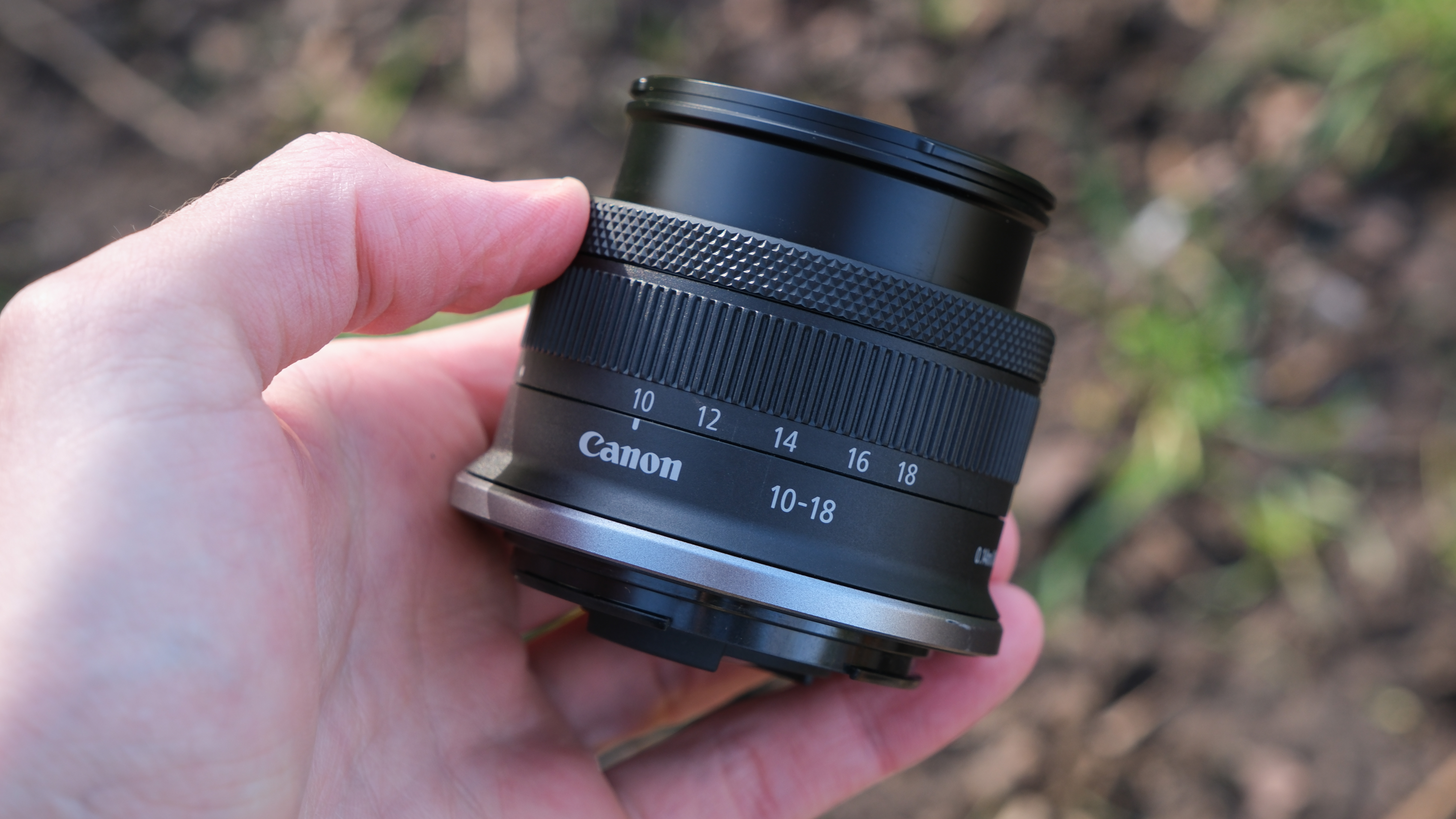

Build quality is good as always with Canon. The lens is made of robust-feeling plastic, although at this price don’t expect to find any weather sealing. The zoom ring is small, but I found it easy enough to turn, with a rigged surface to the plastic, but no rubber or more grippy material.
The lens also has a control ring that can be switched to perform manual focus duties when necessary. It is skinnier than on other larger lenses, but I found it easy enough to locate by feel alone with its diamond pattern. The lens has no manual switches, with all the functions being controlled through the camera, although I don’t really miss them on a lens like this.
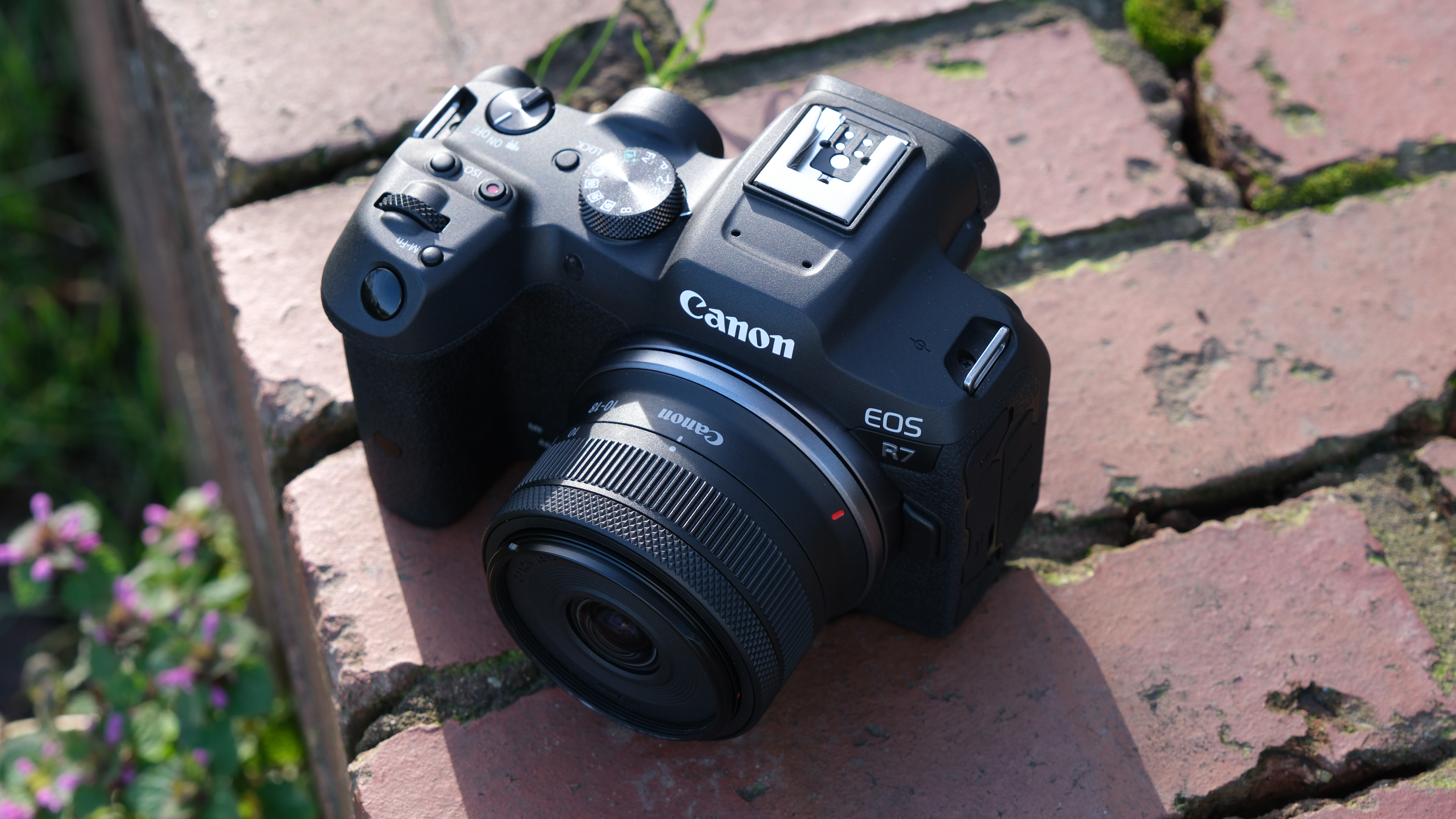
The 10-18mm has an STM motor, which makes for smooth silent focusing in videos, locking on to subjects quickly for stills in my testing. Like some of Canon’s most recent designs, you can achieve a better close focusing distance by switching the lens to manual focus, and also get a much higher magnification of half macro size, although I am not sure I would use a lens of this focal length for macro unless I wanted some unique results.
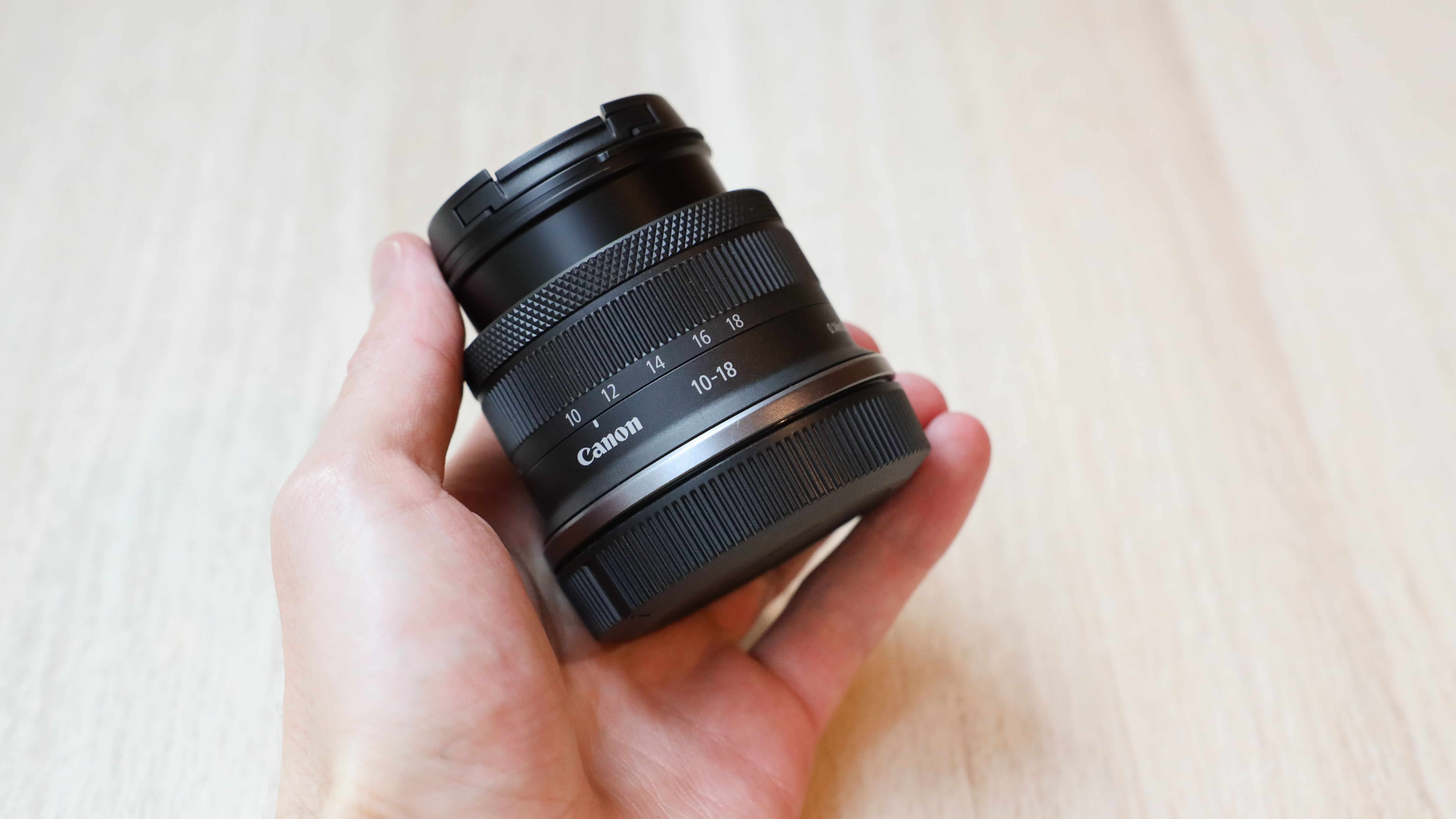
Canon RF-S 10-18mm: Photo Performance
The RF-S 10-18mm puts in a strong performance for a lens of its class, and I was pleasantly surprised by the results of such a tiny optic. The photos are clear with a good amount of contrast. Sharpness looks decent across the frame, at either end of the lens focal range, there isn't much softness in the corners, but that might be down to the pragmatic max aperture and in-camera corrections (which I will get into in a second). The sharpness isn’t going to rival bigger more expensive lenses, but for the diminutive size and low price of this lens, it is more than acceptable.
I am aware comparing a lens that costs almost seven times the price is a redundant exercise, but as a coincidence, I was also testing the Canon RF 10-20mm f/4L lens at the same time as this, and it was abundantly clear just how much difference there is between the two lenses. Despite their similar focal lengths, the 10-20mm absolutely leaves the cheaper optic in the dust in terms of image quality.
The 10-18mm range of this lens is not a huge jump in focal length – but it offers enough of a difference and enough versatility that it is worthwhile over just buying a wide-angle prime lens. In full frame terms, it is equivalent to ~16mm-29mm. You can see in the image below that from the sidewalk, I was able to get much more of the environment in the first shot at 10mm, while focusing more on the subject by zooming in to 18mm.
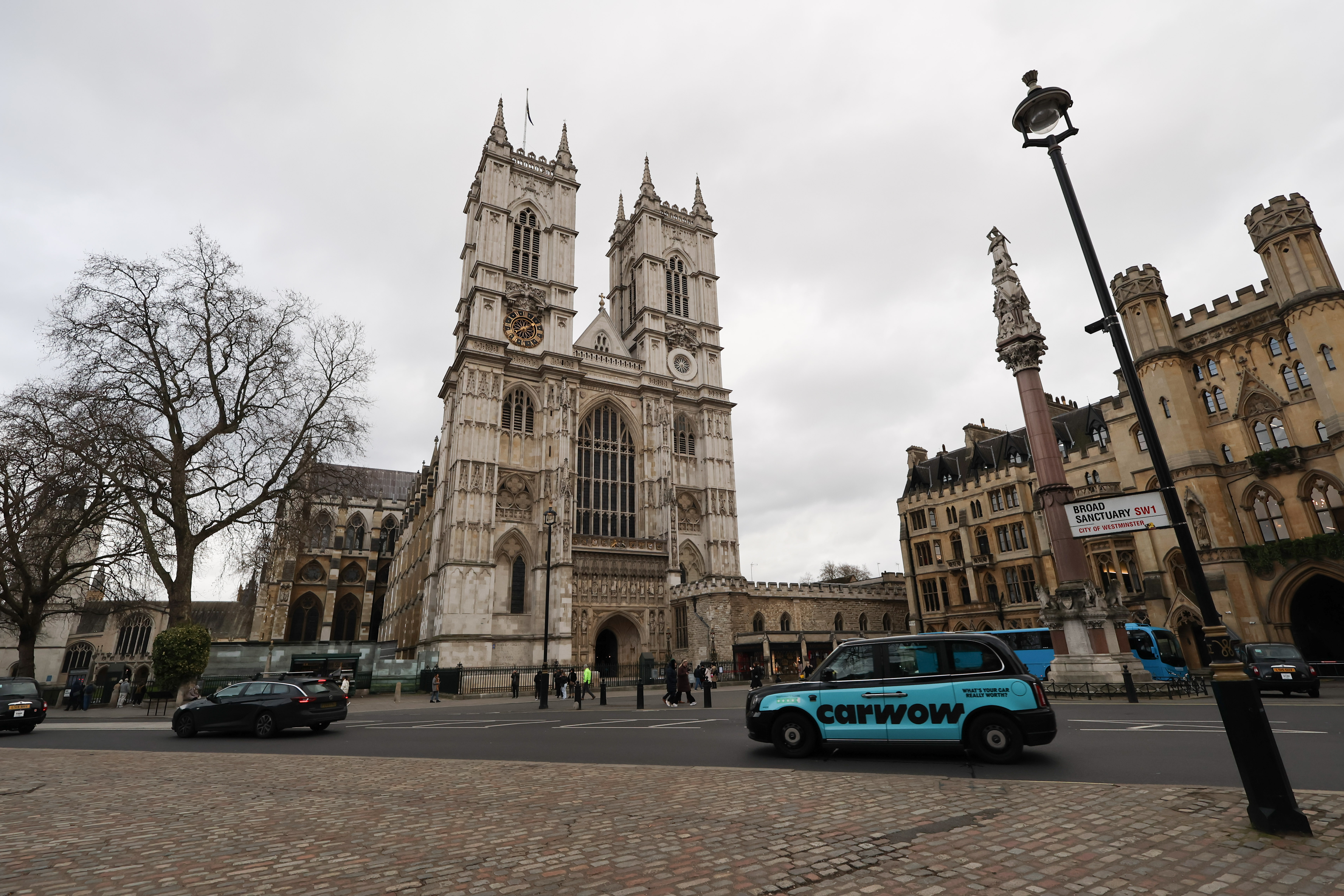
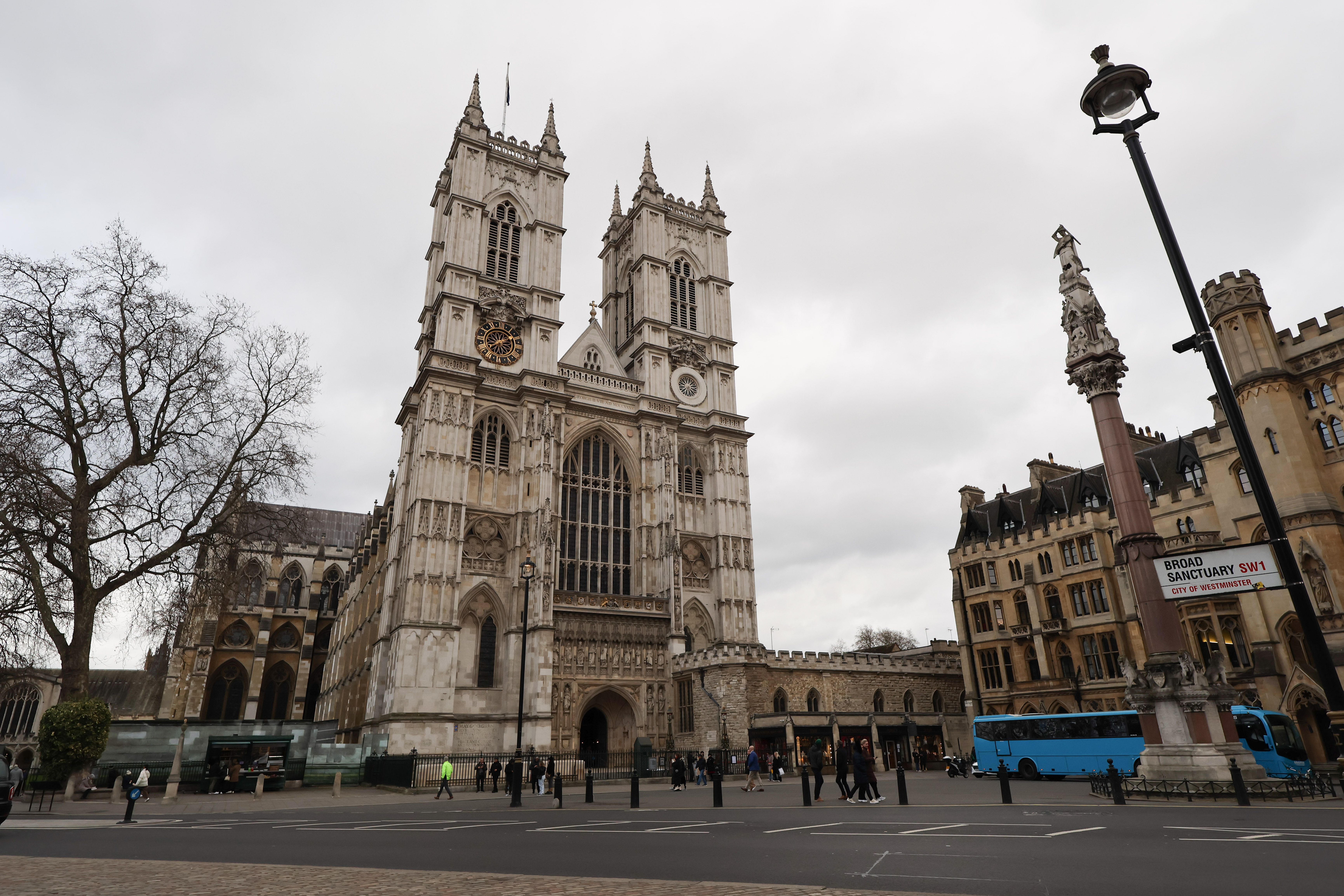
Like a lot of recent lenses, the RF-S 10-18mm relies quite heavily on in-camera corrections. Turning off these corrections and diving into the unedited RAW files, the distortion is not quite as bad as some other recent lenses, but the lens does suffer from peripheral distortion and vignetting, especially at the 10mm end of the lens.
Based on recent experience (the RF 10-20mm has very significant corrections) as well as the tiny size of this 10-18mm optic, I did expect the lens to have heavier distortion than it does, but potentially down to the smaller image circle, it isn’t actually too bad. The in-camera image corrections Canon cameras apply are also outstanding, with JPEGs and video coming straight out of the camera looking pretty flawless.
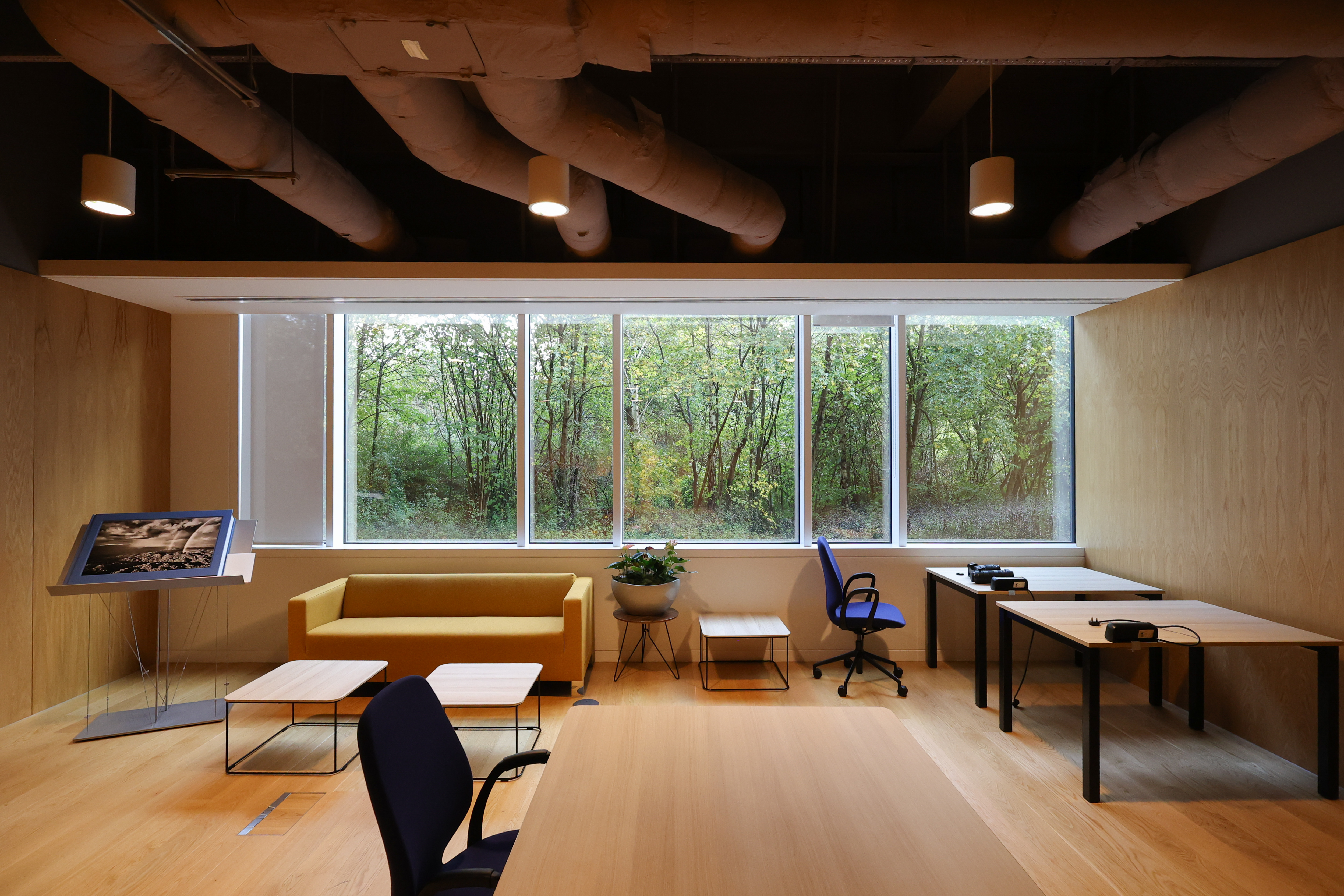
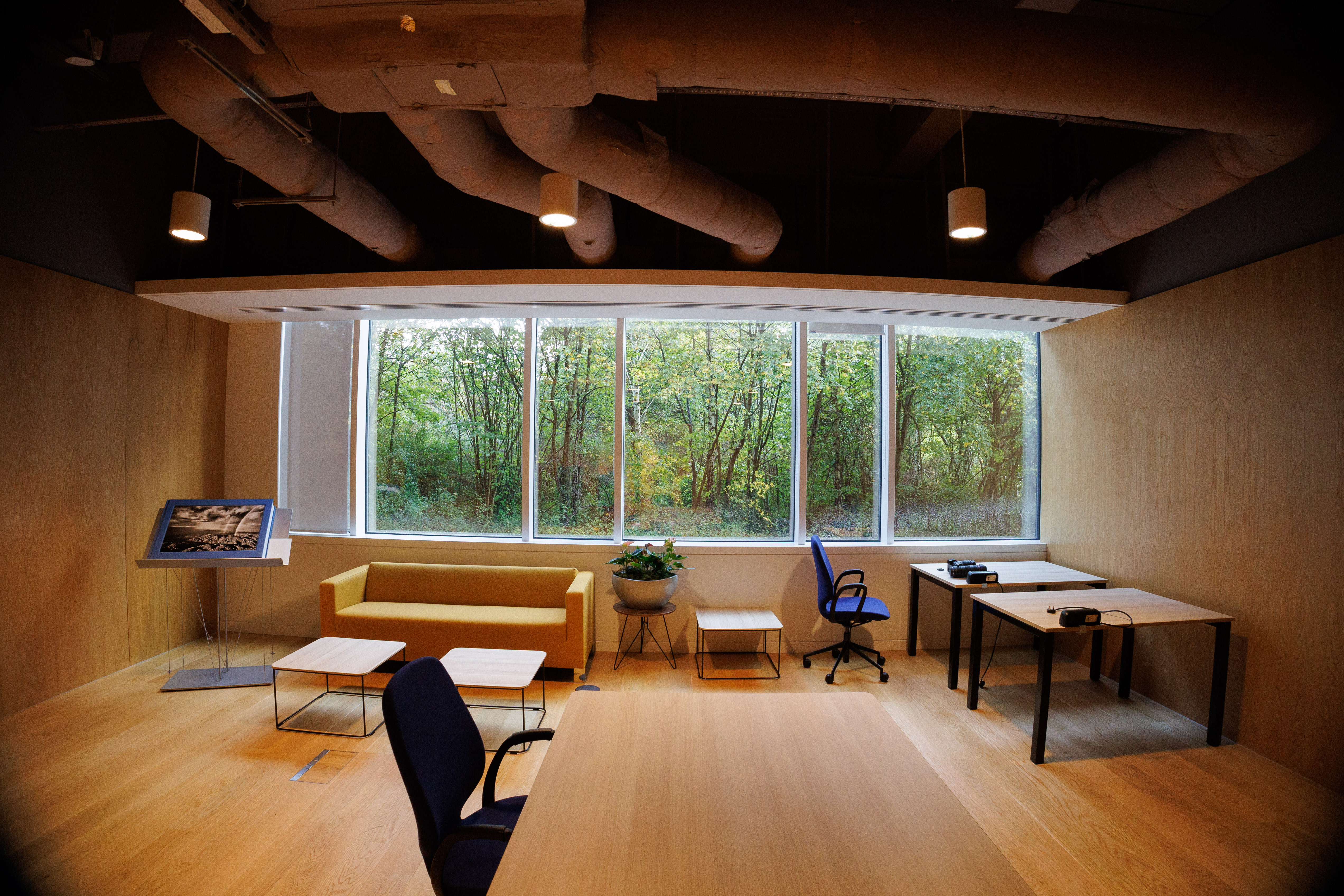
The smaller APS-C lens coupled with a narrower aperture didn't compromise performance too much, although it did make me conscious of my settings more. I was testing on a very gloomy day, it's winter in the UK, which means a lot of cloud cover and a lot of rain, and in these darker environments, I was hindered a little by the lens pushing my shutter speed down or my ISO up to compensate.
When it got darker outside, the image stabilization in the lens, combined with the in-body image stabilization in the EOS R7 I was testing with did allow me to push the shutter speed a few stops lower a few stops lower than I could get away with with no IS.
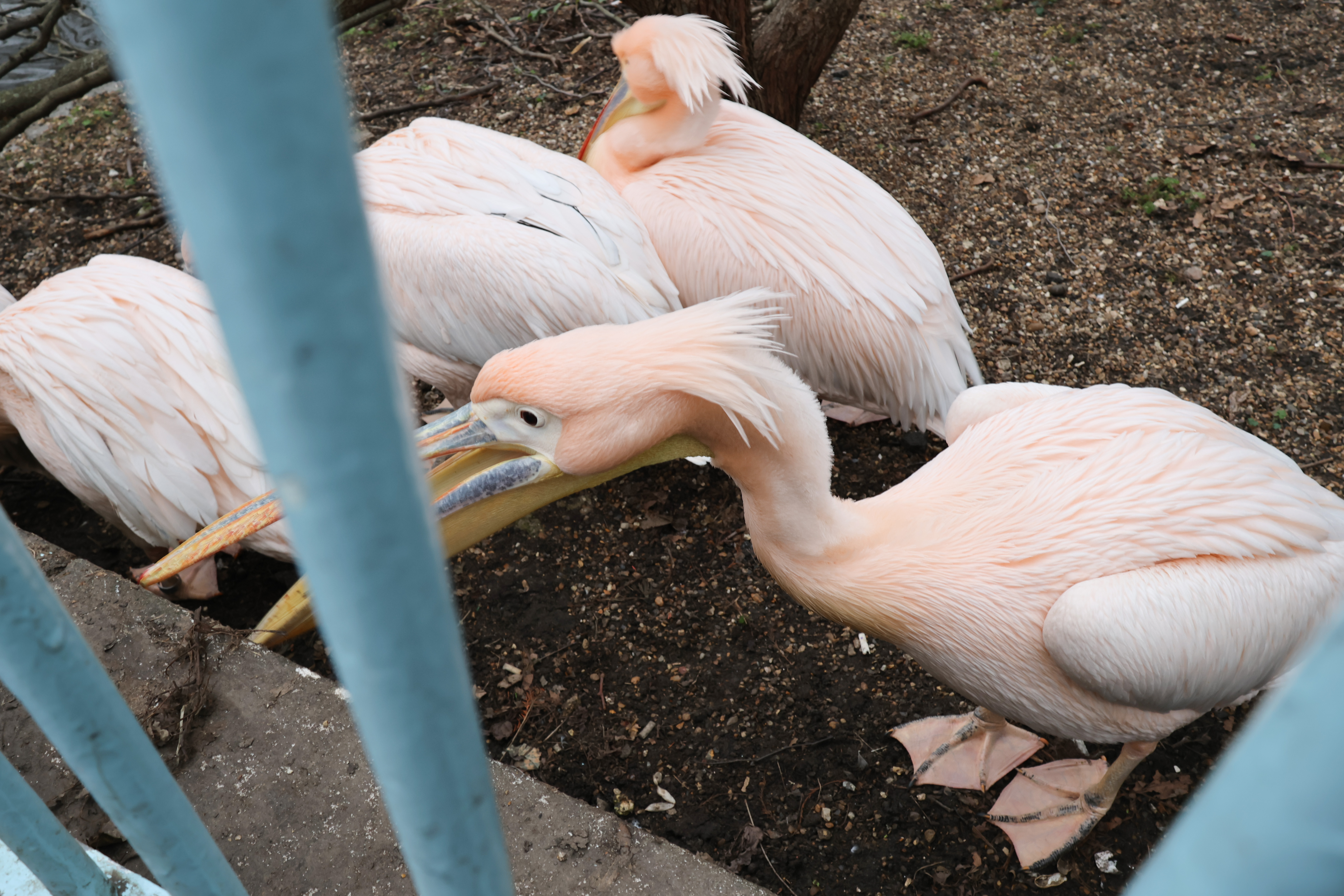
Canon RF-S 10-18mm: Sample Images
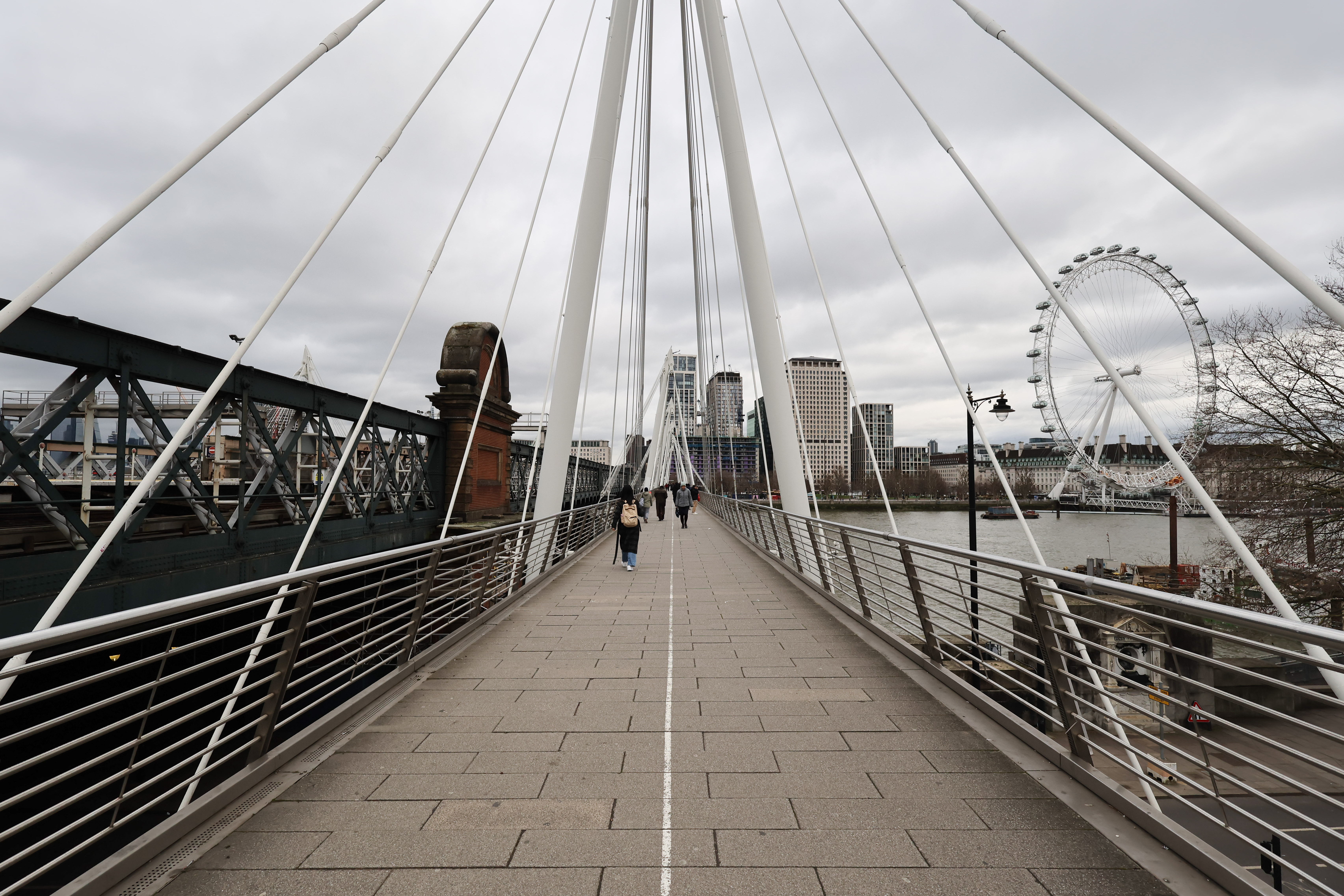
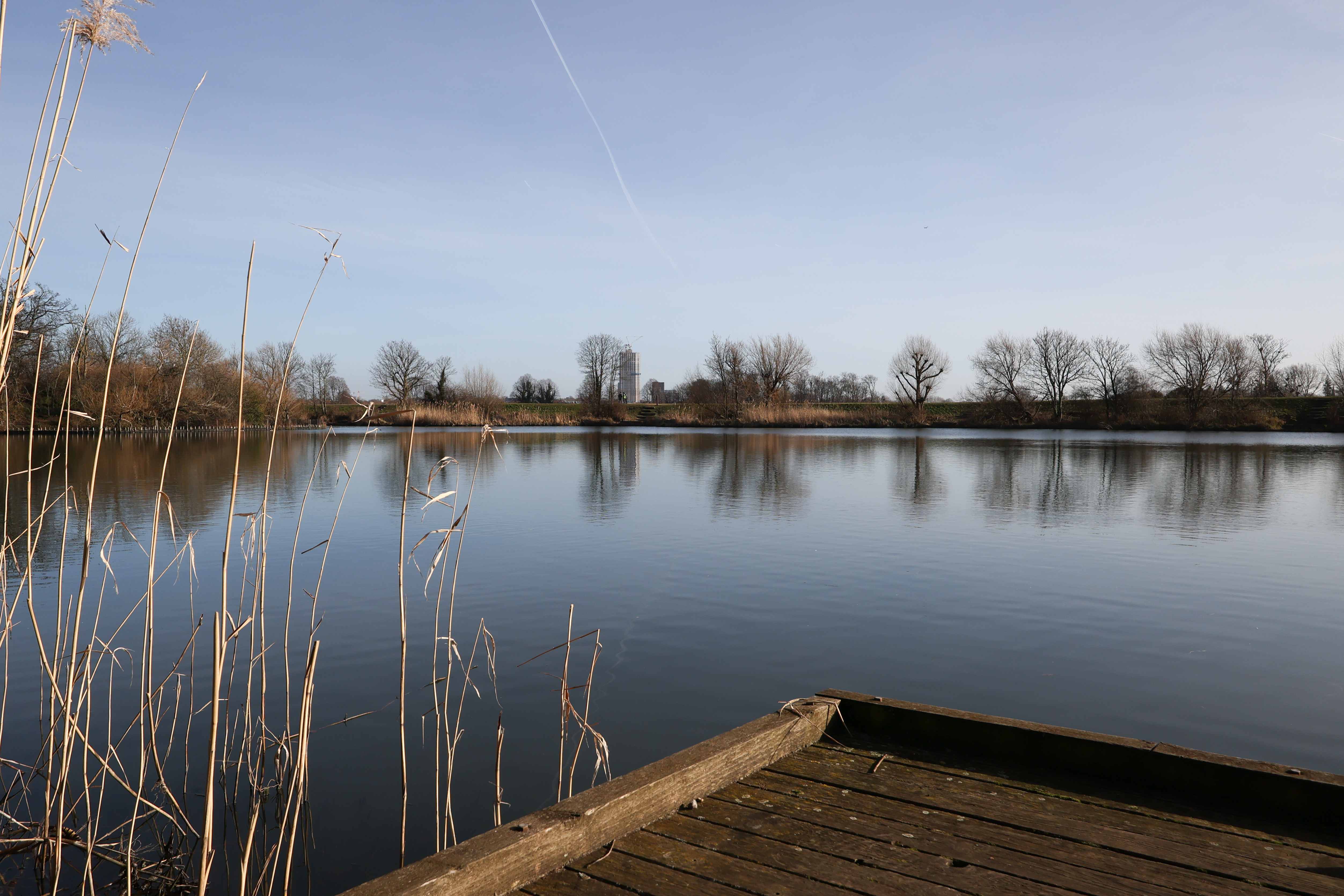
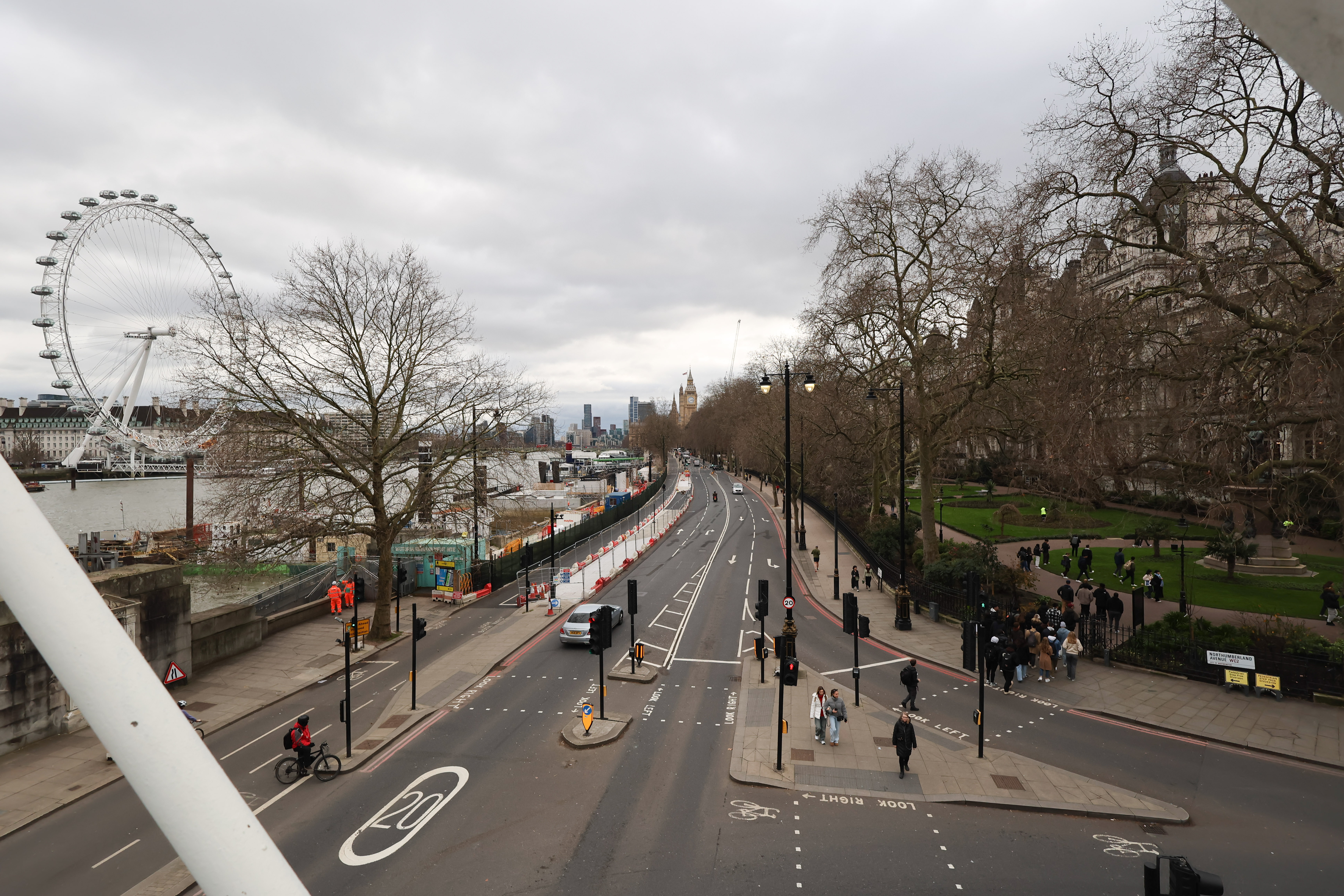
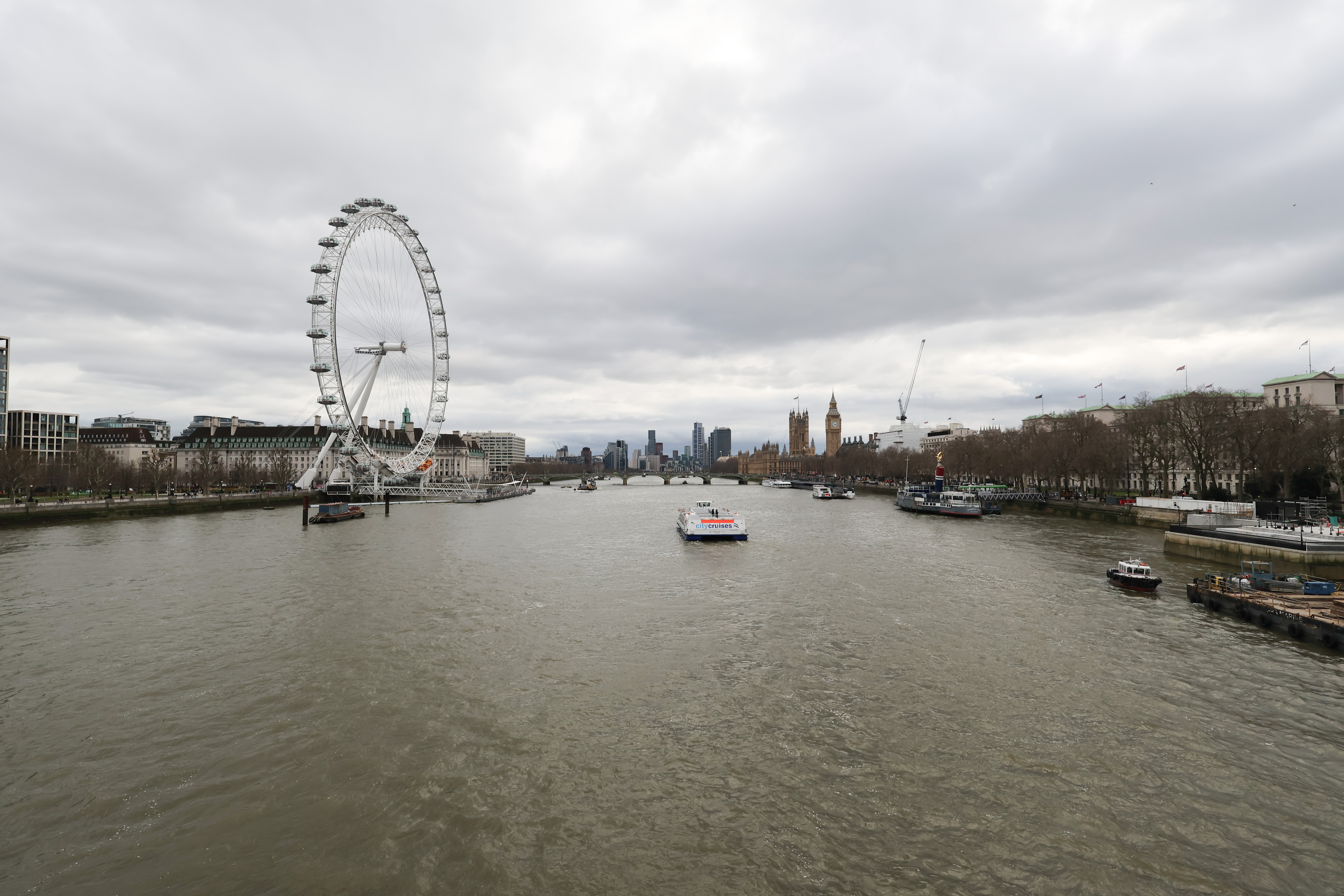
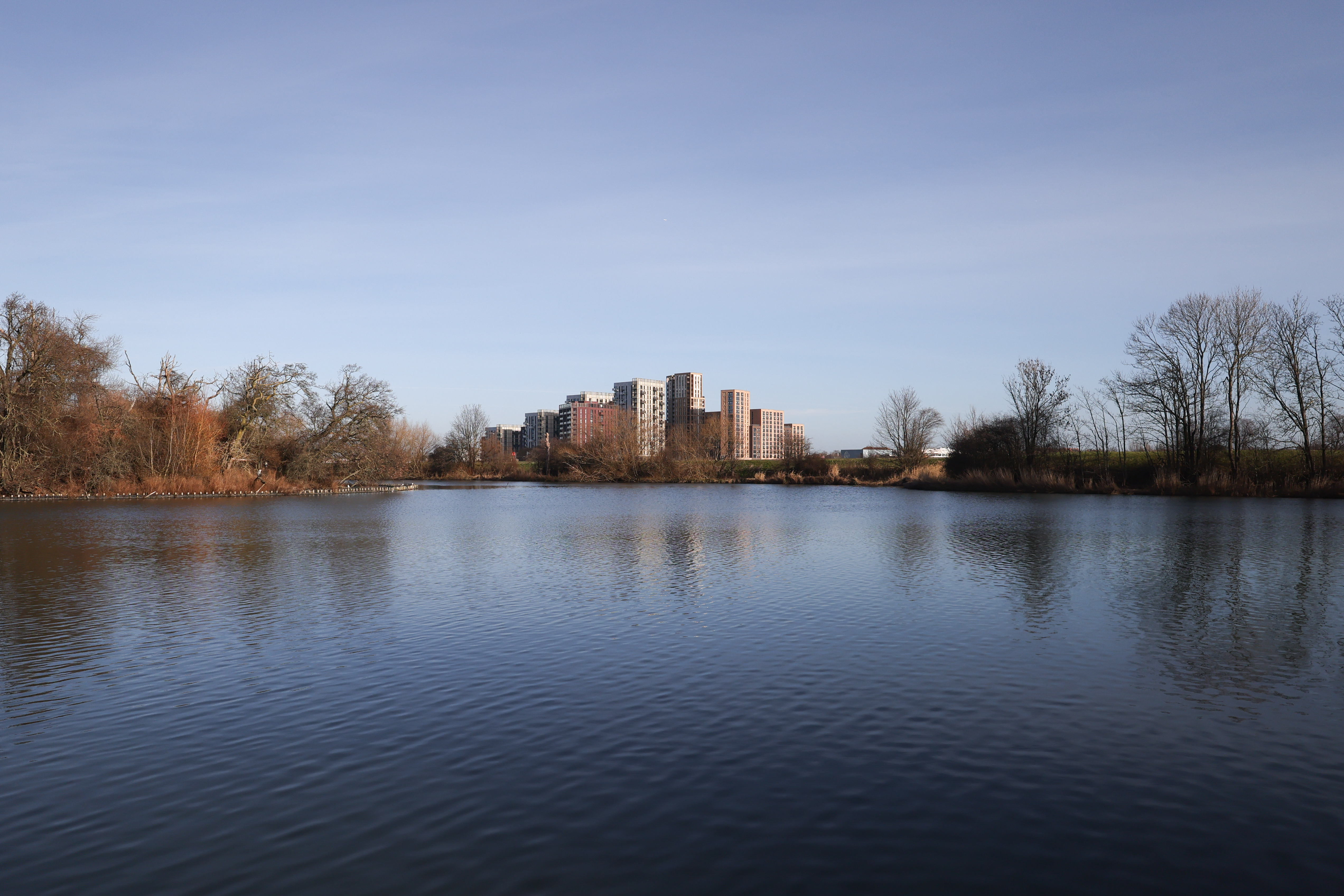
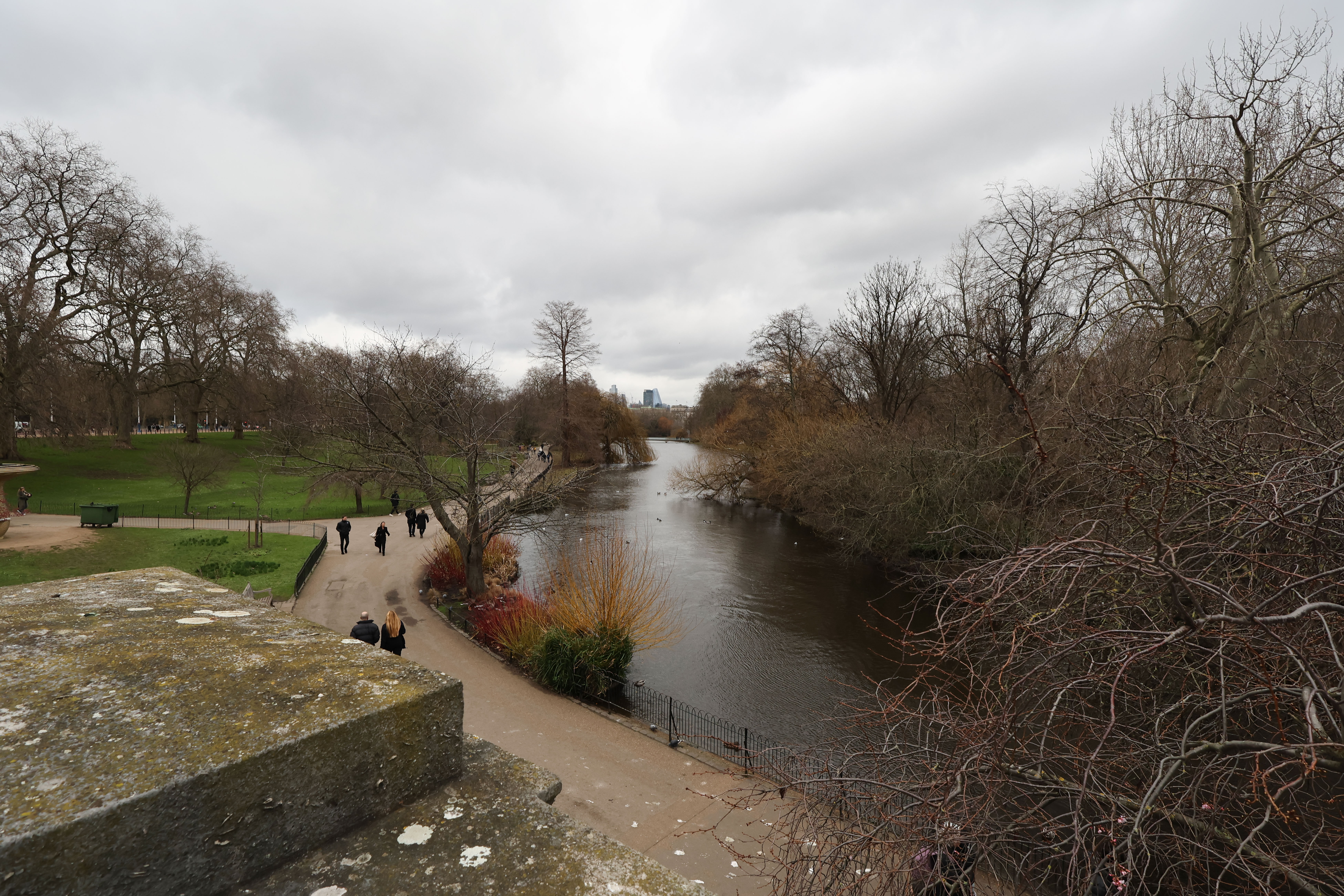
Canon RF-S 10-18mm: Video Performance
One of the big selling points of this 10-18mm lens is just how well it pairs with Canon's smaller cameras for vlogging. Holding the camera at arm's length the lens is a fantastic length for walking around and talking to the camera, with the image stabilization combined with the in-body image stabilization keeping everything steady enough to be usable. Panning was also very stable, although there were a few odd overcompensatory quirks in handheld static shots.
Canon also offers additional digital stabilization at a slight crop, which is very effective if you don't mind sacrificing some focal length, although I usually prefer to add digital stabilization if needed in post-production rather than shoot with it on when not necessary.
Face/eye tracking focus on Canon's cameras in video is perfection, and the RF-S 10-18mm lens has no issue keeping up with shifts in focus, as well as being nearly totally silent in operation, so it won't be picked up on internal or external microphones.
Canon RF-S 10-18mm: Lab results
We run a range of lab tests under controlled conditions, using the Imatest Master testing suite. Photos of test charts are taken across the range of apertures and zooms (where available), then analyzed for sharpness, distortion and chromatic aberrations.
We use Imatest SFR (spatial frequency response) charts and analysis software to plot lens resolution at the center of the image frame, corners and mid-point distances, across the range of aperture settings and, with zoom lenses, at four different focal lengths. The tests also measure distortion and color fringing (chromatic aberration).
Sharpness:
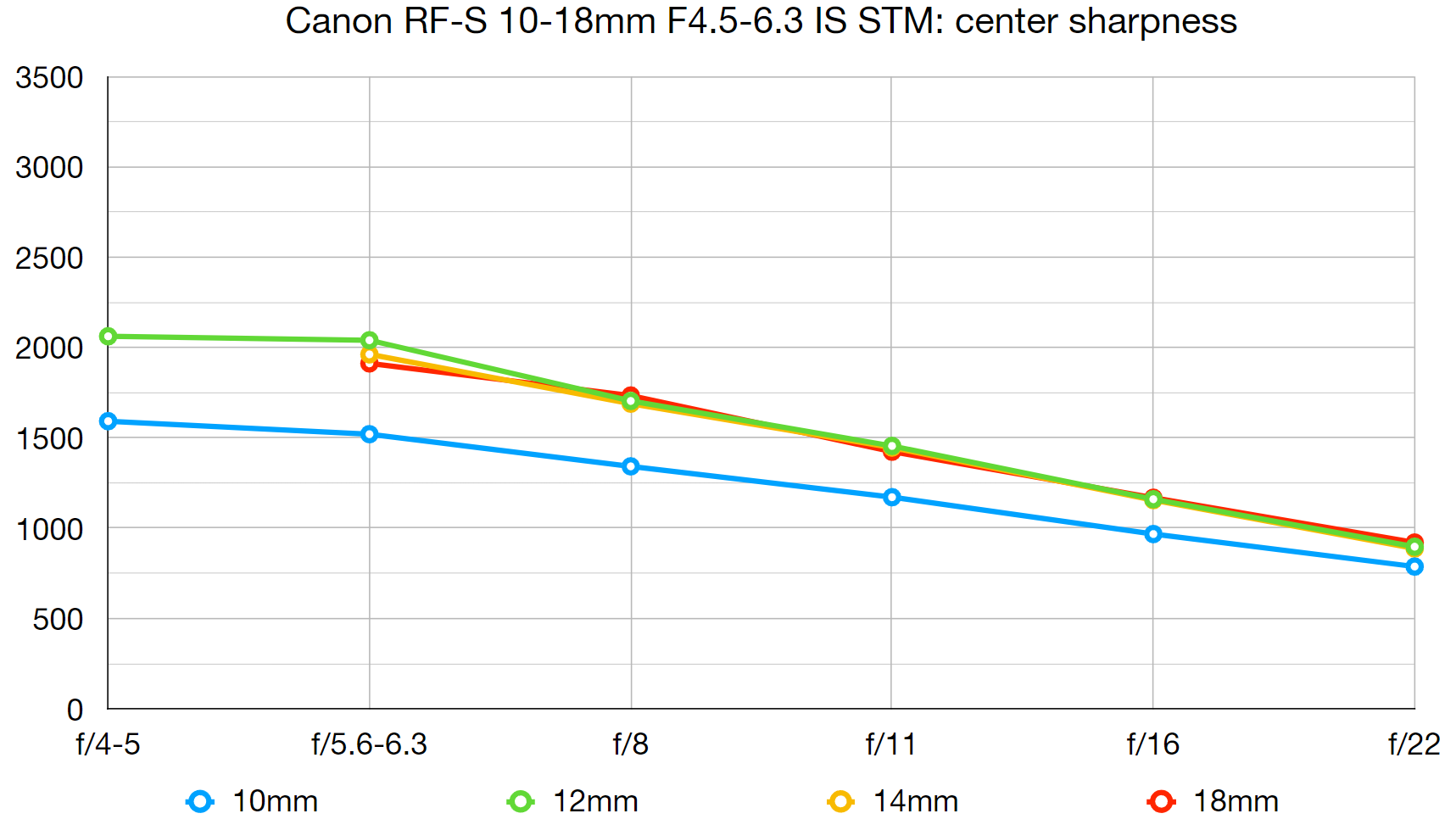
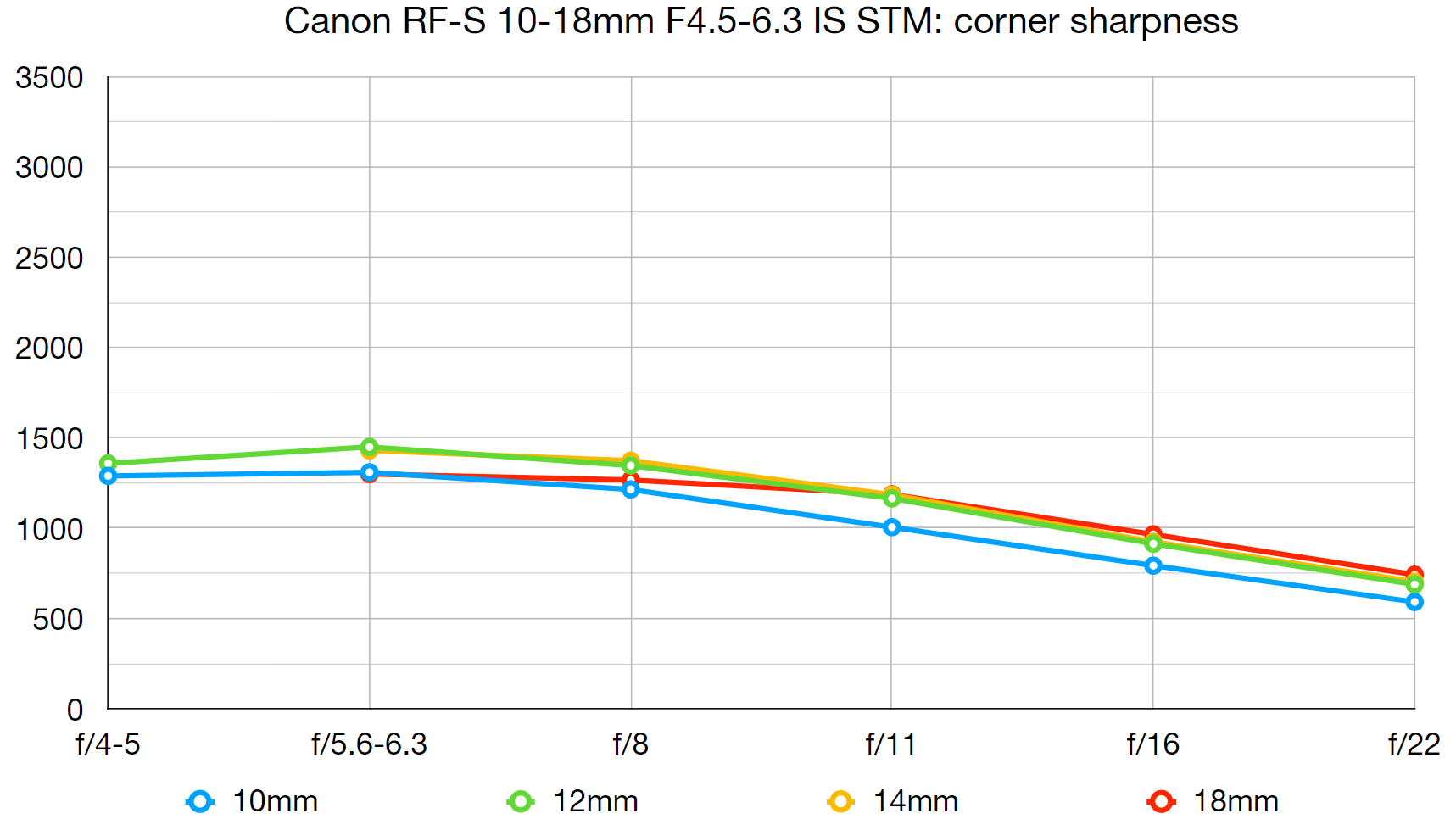
Center-frame sharpness is excellent at most focal lengths, even wide open, although its a little more average at 10mm. Corner sharpness predictably dips, though not by much for such a wide lens, and it's remarkably consistent throughout the aperture and focal range.
Fringing:
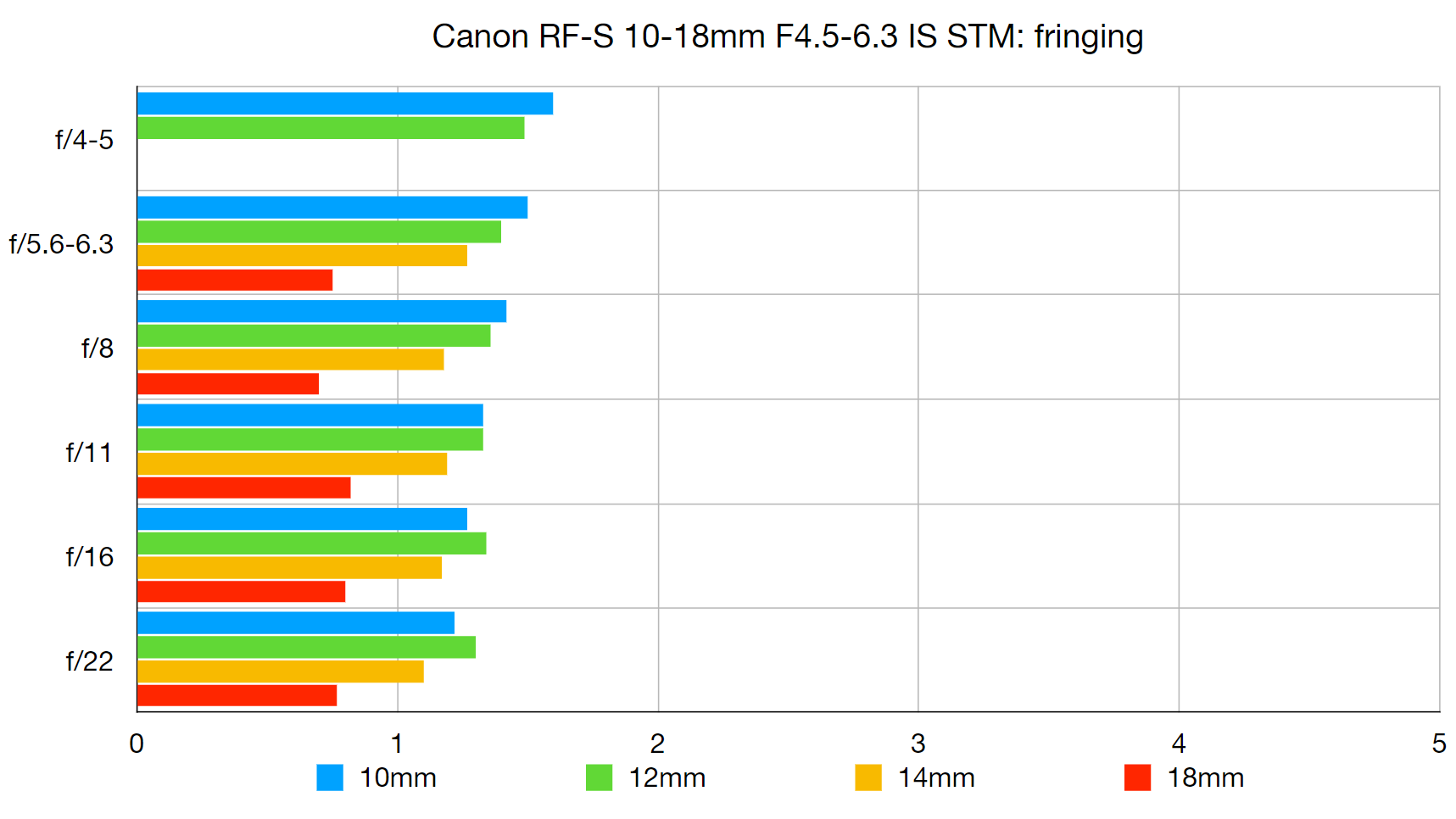
Color fringing is noticeable - though only barely - at most focal lengths and apertures. Only at maximum zoom does it reduce to an unnoticeable level.
Distortion:
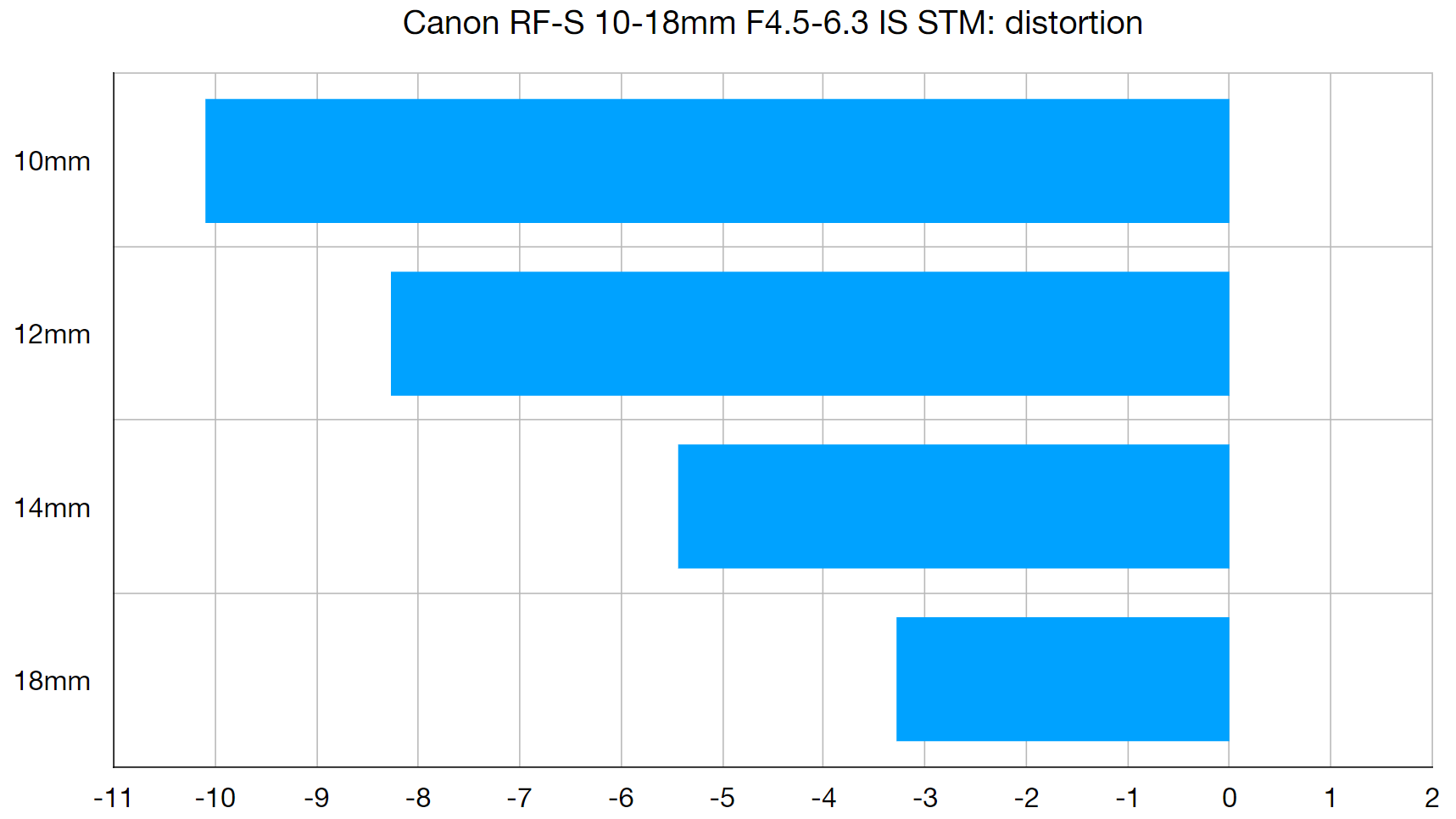
As we've now come to expect from mirrorless wide-angle lenses, barrel distortion is catastrophically bad at very short focal lengths if left uncorrected. This is a lens designed to be used with distortion correction enabled at all times, and if so, it's pretty much distortion-free.
Canon RF-S 10-18mm: Verdict
The Canon RF-S 10-18mm f/4.5-6.3 IS STM is the perfect wide-angle lens for Canon’s littlest EOS R cameras. The lens is so tiny and compact, paired with something like the EOS R100, it makes an almost pocketable combination. The RF-S 10-18mm is likely the new best Canon RF lens you can buy for vlogging, although faces some stiff competition from the Canon RF 16mm f/2.8 with its wider aperture.
Image quality is great for a lens of this size and class, and photos from the 10-18mm are sharp with good contrast. However, the lens does have some issues with distortion (especially at the wide end) but these can be effortlessly corrected in-camera or with minimal work later in editing, so aren’t significant concerns. The narrow aperture is also a bit of an issue in low light, pushing the ISO higher than I would have liked.
The price is competitive, and won’t break the bank, making this a great option for anyone starting out in vlogging, video, or wide-angle photography.
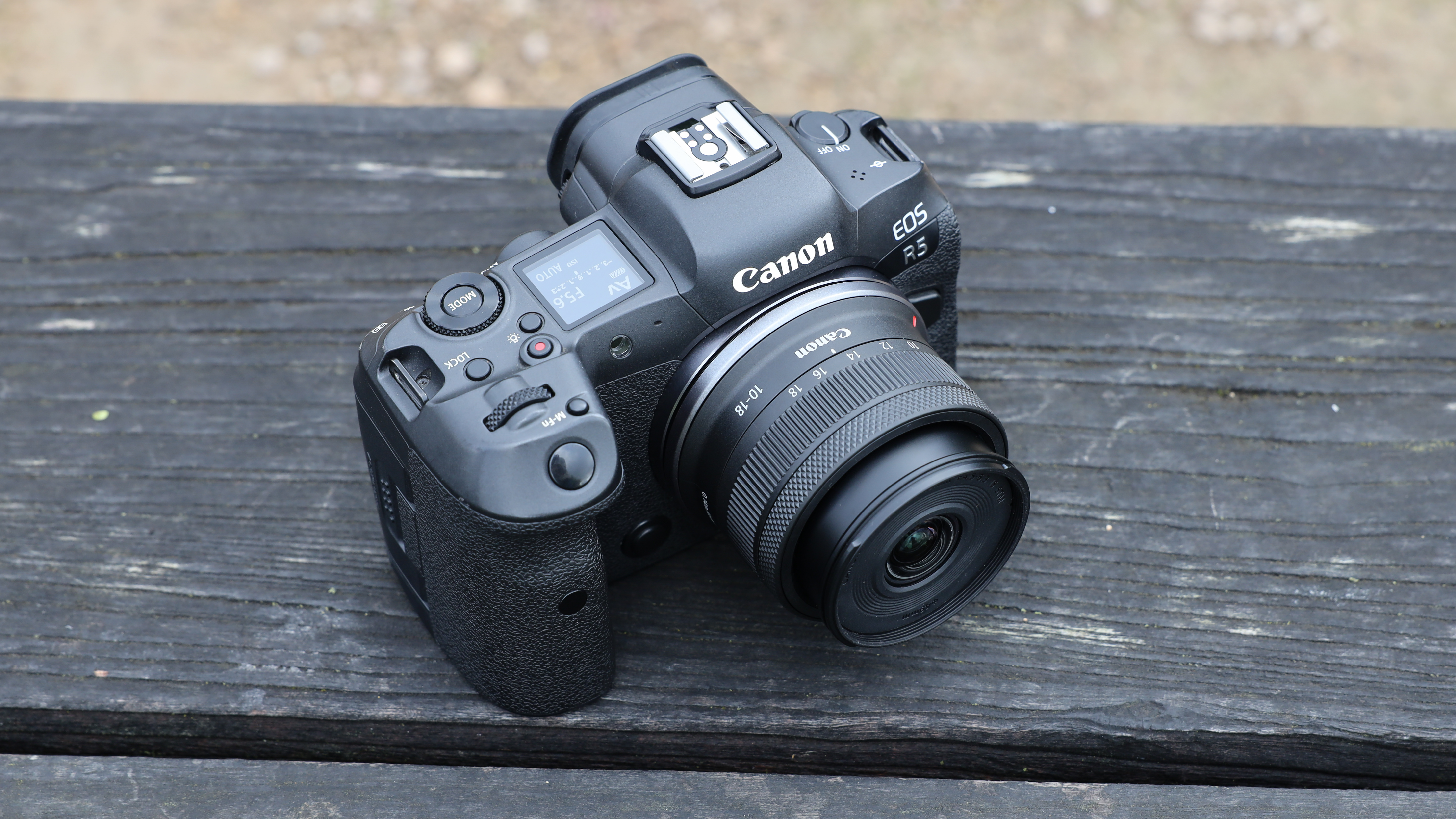
✅ Buy this if...
- You want a great vlogging lens
- You want an affordable wide-angle lens
- You want a super compact lens for your RF-S camera
🚫 Don't buy this if...
- You need a bigger zoom range
- You are looking for professional image quality
- You shoot a lot in low light
Alternatives
The Canon RF 16mm f/2.8 STM’s wide aperture might make up for its narrower field of view. A wider aperture will let you shoot better quality images in low light, as well as offer a shallower depth of field for more professional-looking footage. Many people also find the simplicity of primes and a constant aperture easier to work with. The downside, you lose optical image stabilization, which is important if you move and shoot a lot.
If you are a discerning professional or just money is no object, then look no further than the Canon RF 10-20mm f/4L IS STM, which our reviewer called one of the best wide-angle lenses ever made. Sure it is significantly more expensive and much much larger than the RF-S 10-18mm, but this is a different league in terms of pure image quality.

Gareth is a photographer based in London, working as a freelance photographer and videographer for the past several years, having the privilege to shoot for some household names. With work focusing on fashion, portrait and lifestyle content creation, he has developed a range of skills covering everything from editorial shoots to social media videos. Outside of work, he has a personal passion for travel and nature photography, with a devotion to sustainability and environmental causes.
